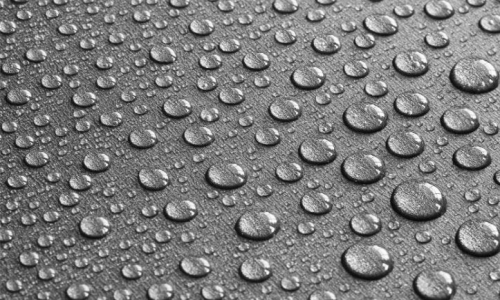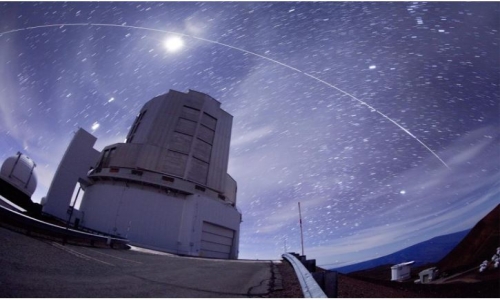


 1:50:2
1:50:2  2025-02-17
2025-02-17  786
786

Incredibly powerful mars quakes that violently shake the red planet don't always begin under the surface, research shows.
A new study using artificial intelligence to analyze seismic data reveals just how strongly and deeply quakes rattle around the red planet's interior – a finding that has implications for our understanding of the gooey Martian core, and how worlds like Earth, Mars, and Venus form.
The research also shows that many more rocks smack into Mars than previously thought, which changes how we must think about what Mars has going on beneath its dusty surface.
"Our observations show that some of the recorded mars quakes are actually caused by meteoroid impacts and not tectonic activity," explains planetary scientist valentine Bickel of the University of Bern in Switzerland.
"This has far-reaching implications for estimates of the frequency of mars quakes and our understanding of the dynamics of the Martian surface in general."
Although Mars is the second-most thoroughly studied planet in the Solar System (after Earth), there's so much we don't know about its dynamics, its history, and its evolution. Our data is limited to what we can sense from afar, after sending machines millions of kilometers across the Solar System to beam data back home.
One such machine was the Mars Insight lander, a seismometer station active between 2018 and 2022, designed to detect the activity rumbling away beneath the Martian surface. Scientists had thought Mars was pretty close to geologically dead, so imagine their surprise when InSight detected more than 1,300 quakes during its deployment.
Quakes on Mars can either start from inside the planet, from geological or magmatic activity, or occur as the result of an impact from an incoming space rock. Scientists have even been able to link tremors detected by InSight to fresh craters.
Bickel and his colleagues used a machine learning algorithm to look for impact craters that newly appeared during InSight's tenure. They examined images of the Mars surface in that time, collected during ongoing observations by the HiRise instrument on the Mars Reconnaissance Orbiter.
They then cross-referenced the 123 new craters they found with the seismic recordings from InSight, and tried to find matches in space and time. They were able to correlate 49 seismic events to at least one impact event each.
"Our data show that more impacts occur on Mars than were determined in previous studies using orbital images," Bickle says.
In fact, the new estimated rate of significant impacts on Mars is 1.6 to 2.5 times higher than previous estimates. Mars, with its tenuous atmosphere, takes an absolute pummeling.
In a second, complementary paper, the researchers zoomed in on one of the impacts, a 21.5-meter (70.5-foot) impact crater near Cerberus Fossae, a region in a young volcanic plain rife with seismic activity. The team was able to link this crater to a specific, high-frequency marsquake – which means scientists may need to rethink their previous interpretation of Cerberus Fossae.
"We thought Cerberus Fossae produced lots of high-frequency seismic signals associated with internally generated quakes, but this suggests some of the activity does not originate there and could actually be from impacts instead," explains planetary scientist Constantinos Charalambous of Imperial College London.
The researchers also studied the quake data collected by InSight to learn more about how impacts affect Mars. Their analysis showed that impact-generated seismic waves were not, as previously thought, confined to Mars' outer layer, the planetary crust. Rather, they were able to penetrate into and below the mantle via a 'seismic highway', reaching more distant regions of the planet.
Once again, this suggests that rethinking is in order. The way seismic waves propagate through a body can be used to map the different densities of the materials they travel through. Misunderstanding that seismic propagation means that the interior of Mars was likely mischaracterized.
"These findings challenge previous assumptions about the propagation of seismic waves and suggest that numerous recorded mars quakes were actually further away from the Mars lander InSight than previously thought," Charalambous says.
"In addition to relocating the epicenters of a range of quakes, this also means that the internal structural model of Mars needs to be revised."
Reality Of Islam |
|

New scienti

This is the

A computer

Auburn Univ
 9:3:43
9:3:43
 2018-11-05
2018-11-05
10 benefits of Marriage in Islam
 7:5:22
7:5:22
 2019-04-08
2019-04-08
benefits of reciting surat yunus, hud &
 9:45:7
9:45:7
 2018-12-24
2018-12-24
advantages & disadvantages of divorce
 11:35:12
11:35:12
 2018-06-10
2018-06-10
 6:0:51
6:0:51
 2018-10-16
2018-10-16
 8:3:0
8:3:0
 2018-06-21
2018-06-21
a hero waters thirsty wild animals
 9:4:9
9:4:9
 2022-01-06
2022-01-06
 10:43:56
10:43:56
 2022-06-22
2022-06-22
 12:47:1
12:47:1
 2022-12-20
2022-12-20
 8:39:51
8:39:51
 2022-09-23
2022-09-23
 7:0:55
7:0:55
 2022-05-17
2022-05-17
 3:18:29
3:18:29
 2022-12-24
2022-12-24
 5:41:46
5:41:46
 2023-03-18
2023-03-18
| LATEST |